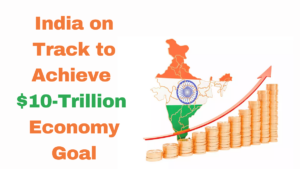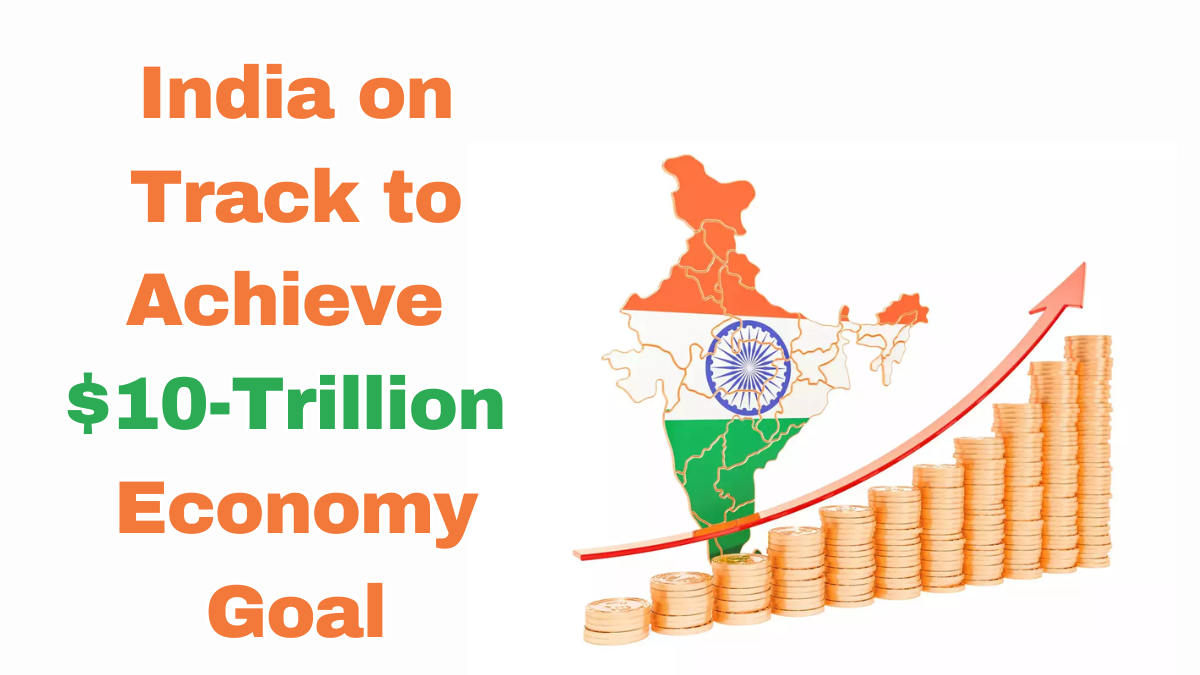India is on a promising trajectory toward becoming a $10 trillion economy, according to Finance Commission Chief, Arvind Panagariya. In his recent statements, Panagariya emphasized the country’s economic potential and the factors contributing to its growth. This ambitious goal reflects India’s economic resilience and ongoing structural reforms. Let’s delve into the key insights shared by Panagariya and the outlook for India’s economy in the coming years.

India’s Economic Growth: The Path to $10 Trillion
Arvind Panagariya, a renowned economist and the head of the Finance Commission, believes that India is on course to become a $10 trillion economy. This optimistic outlook is grounded in several factors, including robust growth across multiple sectors, increased foreign investments, and improvements in infrastructure.
Panagariya pointed out that India’s growth rate has been consistently strong in recent years, with sectors such as information technology, pharmaceuticals, and manufacturing driving significant contributions to the GDP. Additionally, the government’s focus on boosting entrepreneurship, promoting digital transformation, and making India a manufacturing hub is expected to fuel further economic expansion.
Key Drivers for Achieving the $10 Trillion Economy
-
Sectoral Growth and Diversification: India’s economy is experiencing significant diversification, with multiple sectors contributing to GDP growth. The expansion of industries such as IT, renewable energy, and manufacturing, combined with the rise of start-ups and MSMEs (Micro, Small, and Medium Enterprises), is crucial for attaining a larger share of the global economy.
-
Government Initiatives: Various government schemes such as “Atmanirbhar Bharat” (Self-reliant India) and “Make in India” have incentivized innovation and domestic production. The government is also focusing on digitizing key sectors, improving ease of doing business, and creating a favorable environment for foreign investments.
-
Infrastructure Development: One of the main drivers of India’s economic growth is its growing infrastructure. Significant investments in roads, railways, ports, and airports are facilitating smoother trade and enhancing connectivity, both within India and globally.
-
Foreign Direct Investment (FDI): India has attracted significant foreign investments, particularly in the fields of technology, energy, and retail. These investments are helping India integrate more deeply into global supply chains, contributing to higher economic growth.
-
Digital Economy: India’s rapid digital transformation has unlocked new economic opportunities, including online services, e-commerce, and digital payments. The increase in internet penetration and mobile connectivity is opening new avenues for economic activities across rural and urban areas alike.
Challenges in the Journey to a $10 Trillion Economy
While the prospects for India’s economy are bright, there are challenges to overcome in its path to becoming a $10 trillion economy. Some of the key challenges include:
-
Income Inequality: A major concern is the disparity in income distribution across regions and sectors. Addressing income inequality will be critical to ensuring inclusive growth.
-
Job Creation: The creation of quality jobs is essential for long-term sustainable growth. The government must ensure that the labor market expands in line with economic growth.
-
Environmental Sustainability: As the economy grows, environmental concerns are becoming increasingly important. Balancing growth with sustainable practices will be vital in ensuring that India’s development is both inclusive and environmentally responsible.
-
Global Economic Uncertainty: Geopolitical tensions, global economic shifts, and the ongoing pandemic-related disruptions could impact India’s growth. Navigating these uncertainties will require agility and effective policy responses.
What Will it Take to Achieve $10 Trillion?
Achieving a $10 trillion economy will require coordinated efforts across multiple areas:
- Boosting Productivity: Increasing labor and capital productivity across various sectors will be key to sustaining growth.
- Fostering Innovation: Encouraging research and development, innovation, and entrepreneurship will allow India to compete on the global stage.
- Addressing Structural Challenges: Reforms in labor, land, and capital markets will be necessary to drive more efficient economic activity and create a conducive environment for businesses.
Conclusion
India’s ambition of becoming a $10 trillion economy is not an unattainable goal, according to Arvind Panagariya. The country’s ongoing economic reforms, combined with its large and diverse economy, are creating a strong foundation for future growth. While there are challenges to overcome, the potential for India to reach this milestone is very much within reach if the right policies continue to be implemented.
Frequently Asked Questions
What is India’s goal for its economy?
India aims to become a $10 trillion economy in the coming years, according to Finance Commission Chief Arvind Panagariya.
What sectors are contributing to India’s economic growth?
India’s economic growth is driven by sectors like IT, pharmaceuticals, manufacturing, and digital services.
What government initiatives are supporting India’s economic growth?
Initiatives such as “Atmanirbhar Bharat,” “Make in India,” and digital transformation policies are key to boosting economic growth.
What challenges does India face in achieving its $10 trillion economy goal?
Challenges include income inequality, job creation, environmental sustainability, and global economic uncertainty.
How can India achieve a $10 trillion economy?
By focusing on productivity, innovation, and addressing structural issues, India can reach its $10 trillion economy goal.
Click here to learn more.
Pari is a passionate writer known for captivating stories that blend imagination and reality. Inspired by travel, history, and everyday moments, Pari crafts narratives that resonate deeply with readers.
